A stunning little hummingbird with a dark blue crown and a pair of red, blue, and gold tufted “horns.”
Meet the Horned Sungem
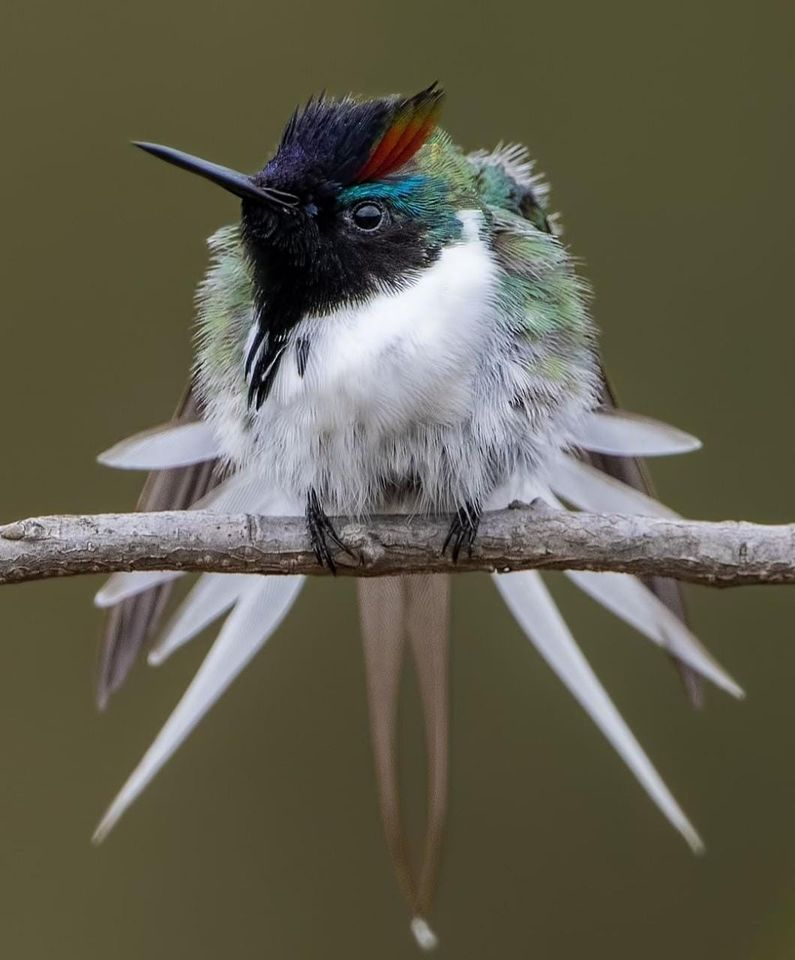
The horned sungem (Heliactin bilophus) has a spectacular crown tuft showing red, blue, and gold, on either side of his iridescent dark blue crown. His upper parts are bronzy-green, the throat and upper breast are black while the belly and sides of the neck are white.
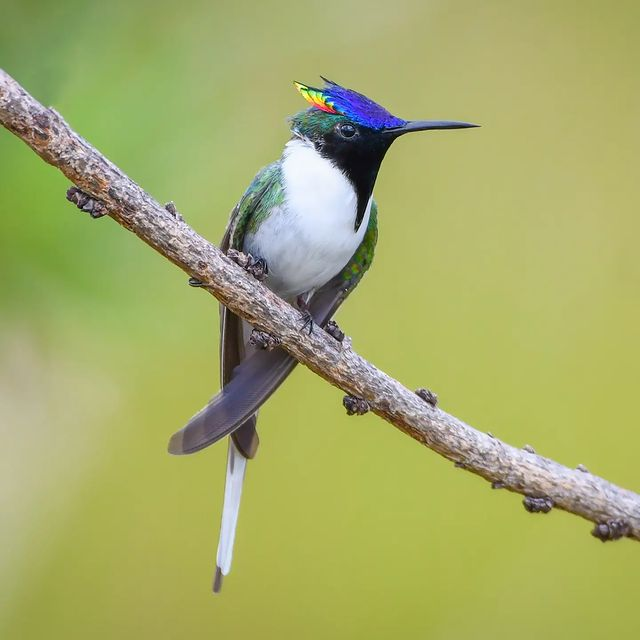
His tail is long and pointed showing a dark V on white when seen in flight from below.
The female is very similar to the male but without the spectacular crown pattern or the black throat.
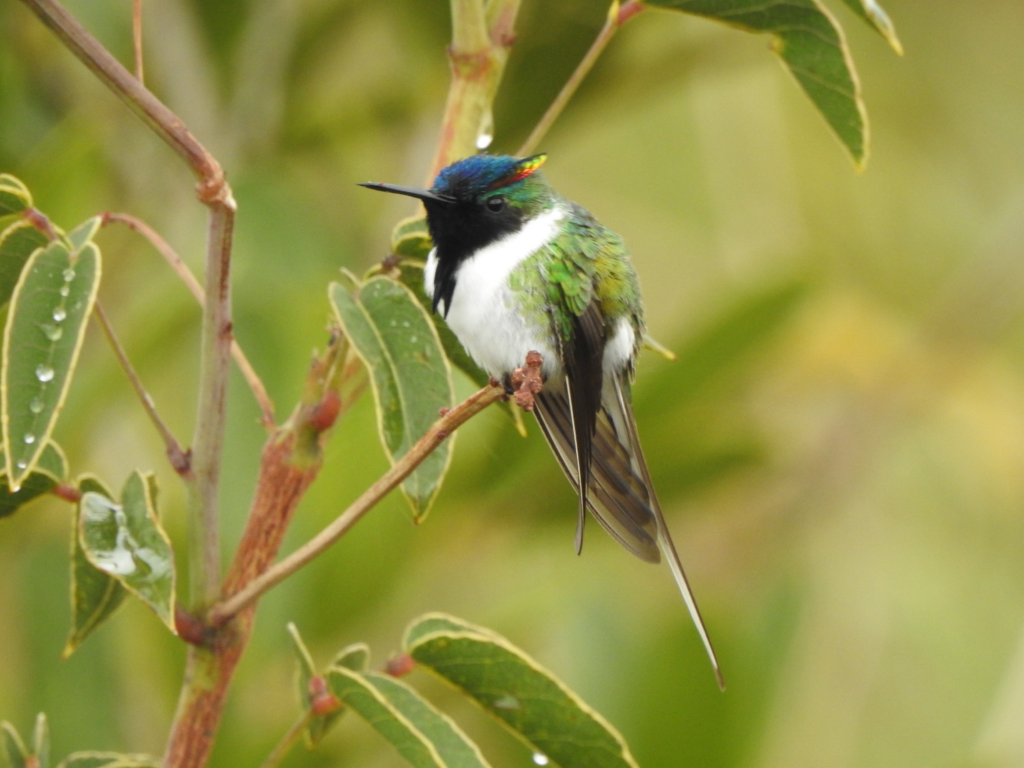
“Horned Sungem, Chapada Diamantini, Bahia Brazil (cropped)” by Michael Hurben is licensed under CC BY-SA 4.0.
This species can be found in the southern half of Brazil as well as just across the border into Bolivia, with a disjunct population in northern Brazil and Surinam.
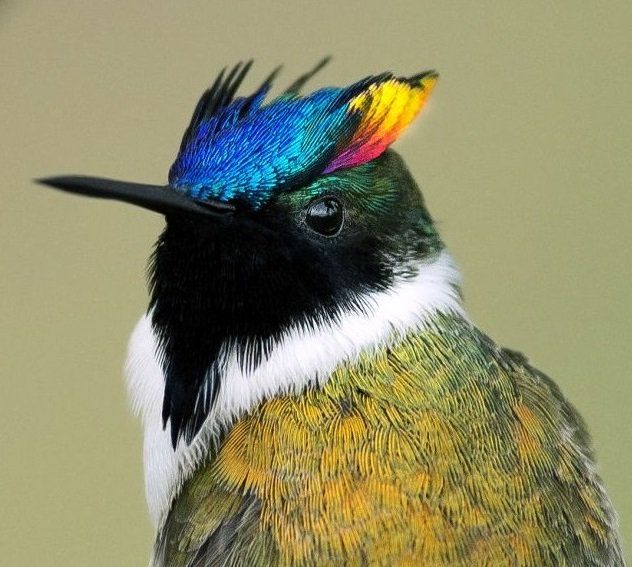
Horned sungem’s like to live around dry savannas, dry grasslands, open forests, forest edges, and rural gardens. They are present from sea level up to an altitude of 1.000 m.
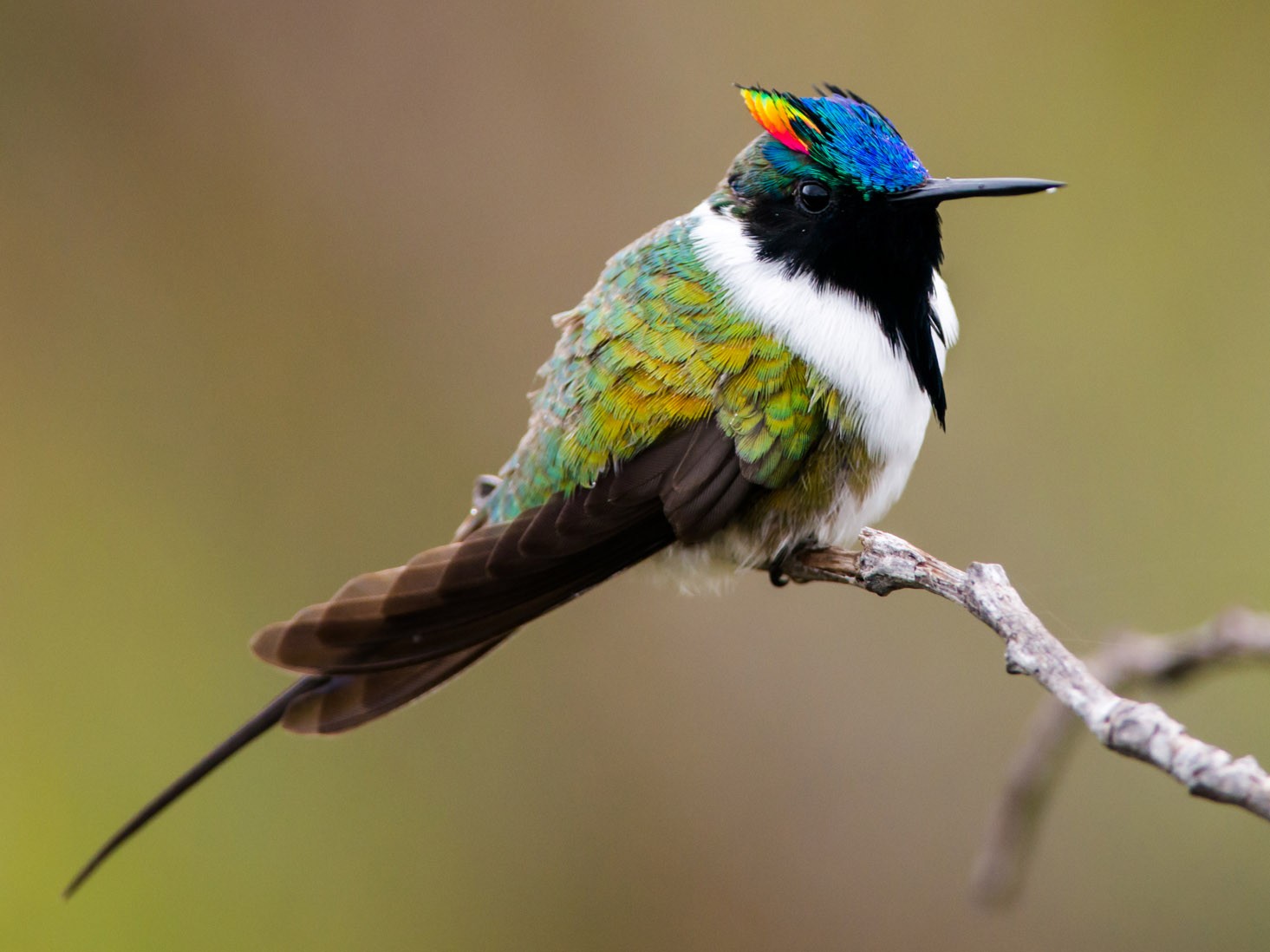
These birds like to feed on the nectar of various flowery plants, chiefly Caesalpinoideae, Vochysiaceae, and Asteraceae. However, they will also eat small insects.
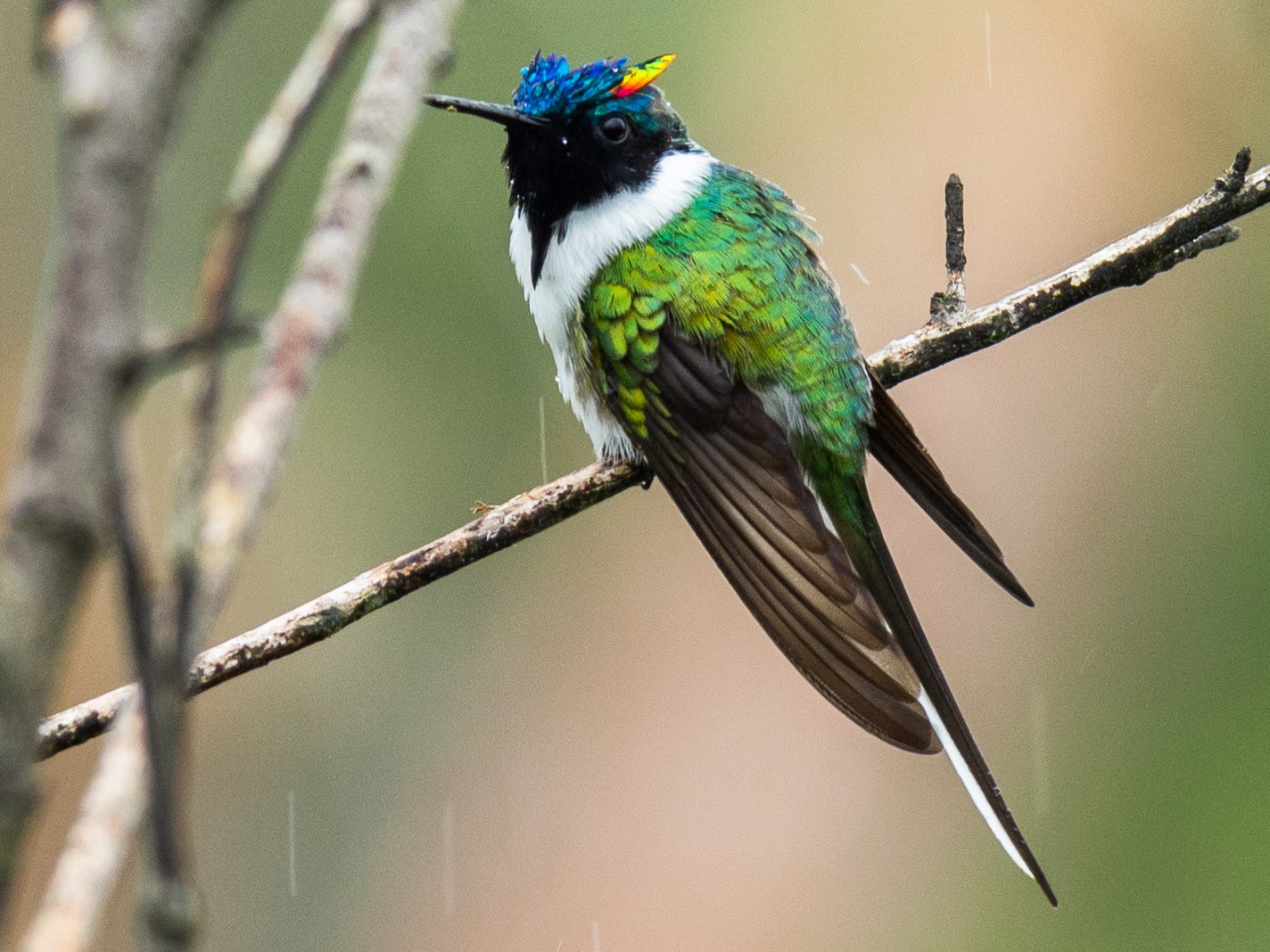
Horned sungem’s nest in a small cup made of soft plant material and cobwebs. This is normally built in the fork of a small scrub, 1 m above ground. The female lays 2 eggs within which she incubates alone for 12-13 days. The chicks fledge 20-23 days after they hatch.
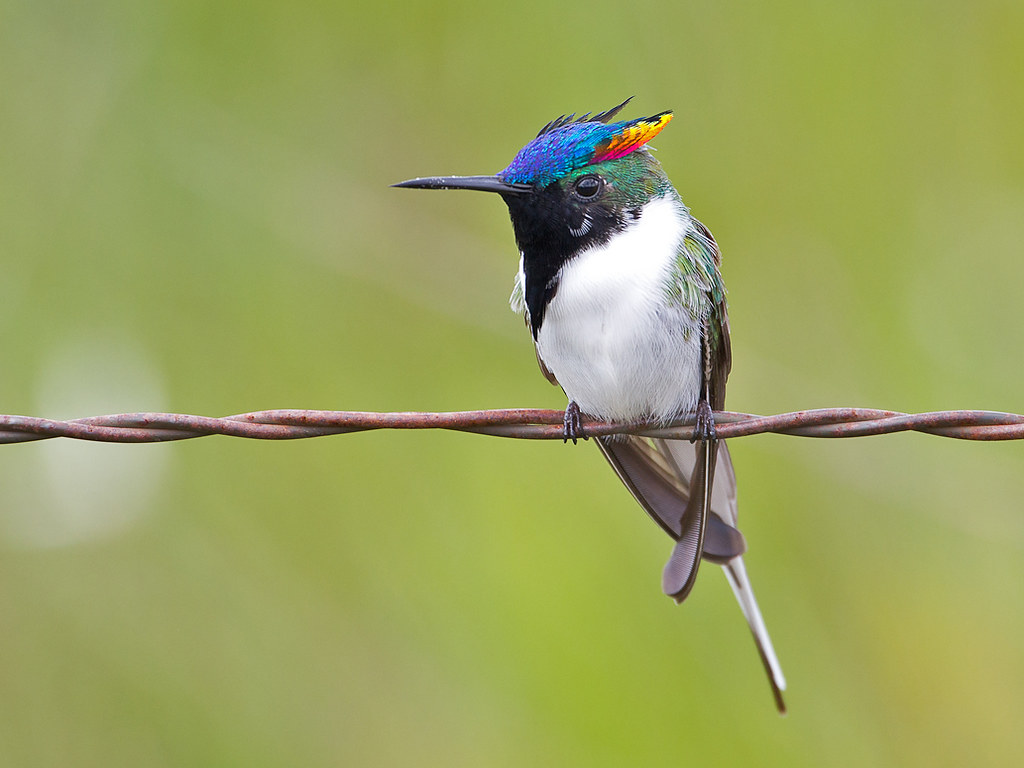
This species has a very large breeding range and is described as uncommon. The species is suspected to be increasing since it readily adapts to man-made habitats such as gardens and cultivated areas. For this reason, it is classed as of LC (Least Concern) on the IUCN red list.
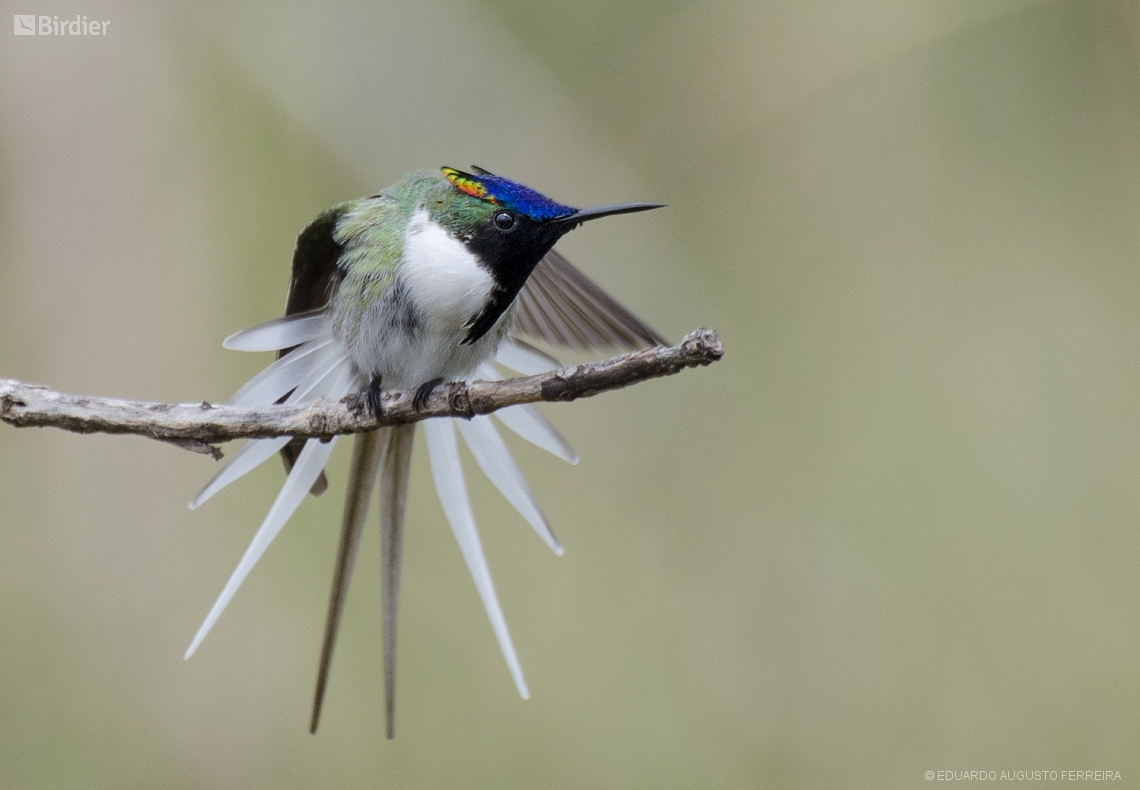
You can watch this bird right here in the video below:




